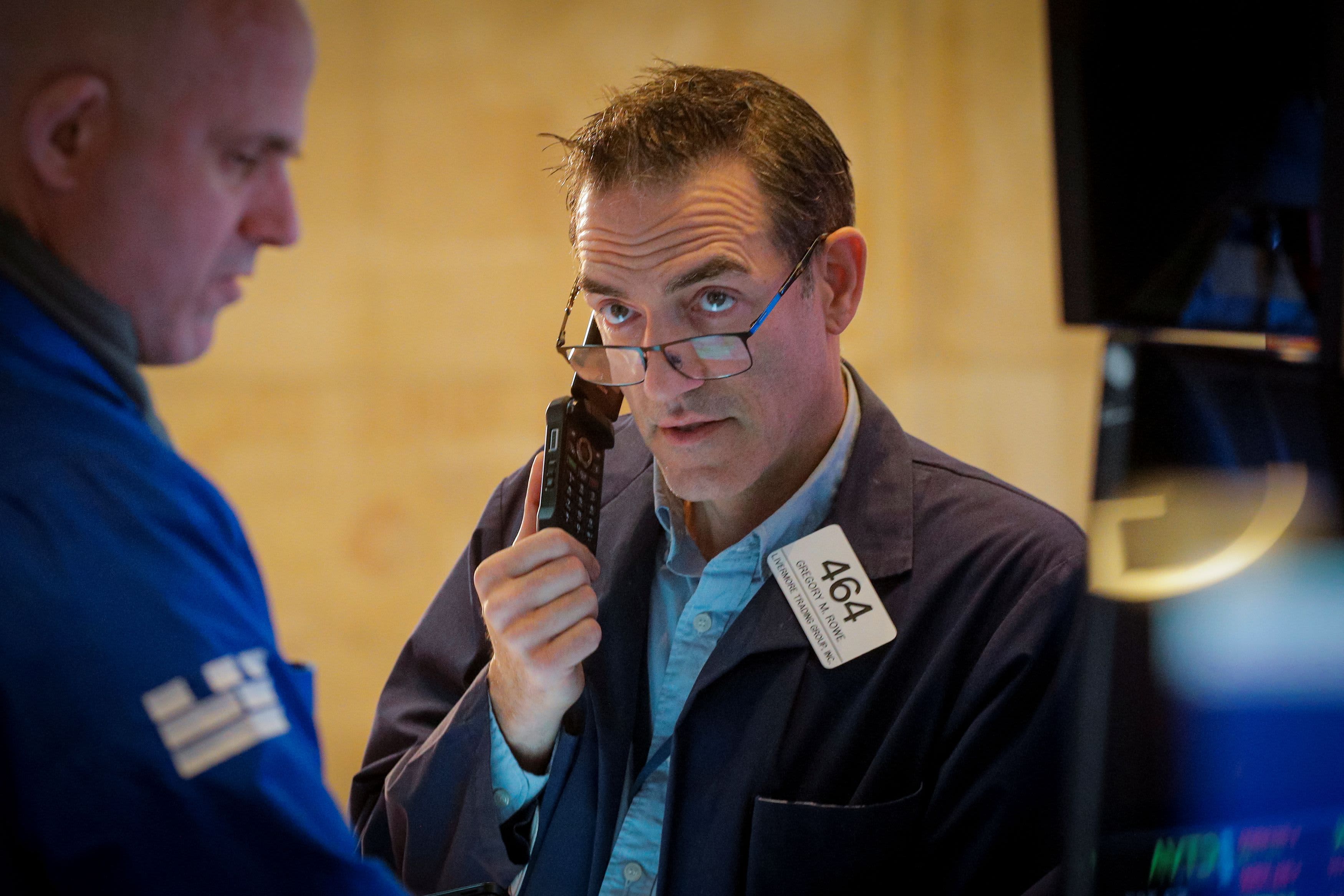Stock futures are mixed after bitcoin’s weekend rout, continued tech selling

Stock futures were mixed on Monday.
Here’s what was influencing the markets to start the week:
- Bitcoin lost $10,000 since Friday, including a sudden drop overnight from Friday to Saturday. The move showed decreasing risk appetite and is hitting related tech stocks.
- Investors continued to sell tech stocks with relatively high valuations. Those shares dragged the market down to a losing week on Wall Street last week.
- Investors were shifting into shares linked to the economic reopening Monday like energy, industrials and airlines.
- There’s a major shift underway at the Federal Reserve to bring about a faster end to its pandemic easing policies.
Nasdaq-100 futures shed 0.5% in early Monday trading. Yet S&P 500 futures were higher by 0.2% and Dow Jones Industrial Average futures were higher by 0.5%.
Bitcoin traded around $57,000 on Friday morning, but by Saturday had plunged to around $43,000. By Monday the world’s largest cryptocurrency had clawed back some of its losses, last trading at around $47,377.
Shares of Coinbase lost 6% in premarket trading, while Square declined by nearly 3%.
Loading chart…
High-priced tech shares were lower in premarket trading, continuing a de-risking theme in markets. Nvidia was off by 4% in premarket trading. Tesla was also in the red.
On Friday, the Nasdaq Composite slid 1.92% with shares of Tesla as the biggest drag. Cathie Wood’s flagship Ark Innovation Fund fell more than 5% Friday, and all of the fund’s holdings are now in a bear market apart from two stocks. Teladoc Health, Zoom Video, Roku, Palantir and Twilio are some of the names that have registered steep losses.
Ark Innovation was down another 2% in premarket trading Monday.
Last week, Fed Chair Jerome Powell unnerved markets by signaling the Fed’s focus was inflation, even with the new variant emerging.
Comments by Fed officials suggest that the Fed is likely to decide to double the pace of its taper to $30 billion a month at its meeting next week, CNBC’s Steve Liesman reported on Monday. Initial discussions could also begin as soon as the December meeting about when to raise interest rates and by how much next year.
Stocks linked to the reopening of the economy gained on Monday, boosting sentiment on Dow futures. Boeing and Chevron shares were in the green.
American Airlines shares gained nearly 2% in premarket trading. Carnival and Wynn Resorts shares were about about 1%.
Slower-than-expected job growth also contributed to Friday’s selling. Nonfarm payrolls increased by 210,000 last month, the Labor Department said Friday, which was below the 573,000 number economists surveyed by Dow Jones were expecting.
“A softer payrolls print pulled the rug beneath risk sentiment,” TD Securities wrote Friday in a note to clients. As investors fled to safety the yield on the 10-year Treasury dipped to 1.335%, the lowest since Sept. 21.
Friday’s selling wrapped up a volatile week for the major averages as investors evaluated new information about the omicron variant.
All three major averages finished the week in the red, with the Dow registering a fourth straight negative week for the first time since September 2020. The S&P and Nasdaq Composite were both down for a second consecutive week.
Small cap names were hit especially hard, with the Russell 2000 falling 3.86% for the week.
“Despite our forecast for a flat year for the S&P 500…we are still bullish on pockets of the market, including small caps,” Bank of America said Friday in a note to clients. “Small caps are more domestic, more exposed to the services spending recovery, bigger beneficiaries of capex/reshoring and are inexpensive vs. large caps,” the firm added.
However, Bank of America said the potential upside for small caps hinges on Covid cases staying under control.
The omicron variant has now been discovered in at least 15 U.S. states, CDC Director Dr. Rochelle Walensky told ABC News on Sunday.
“We know we have several dozen cases and we’re following them closely. And we are every day hearing about more and more probable cases so that number is likely to rise,” she said on “This Week.”




